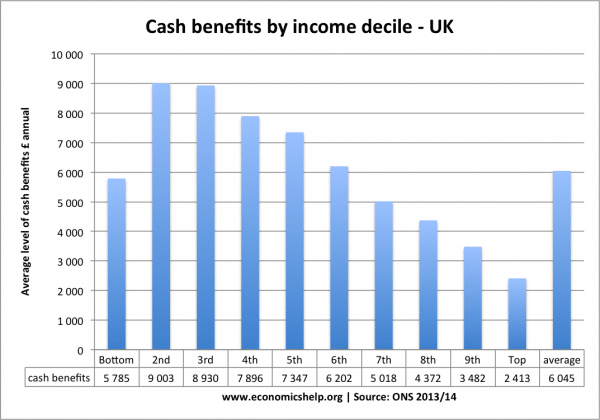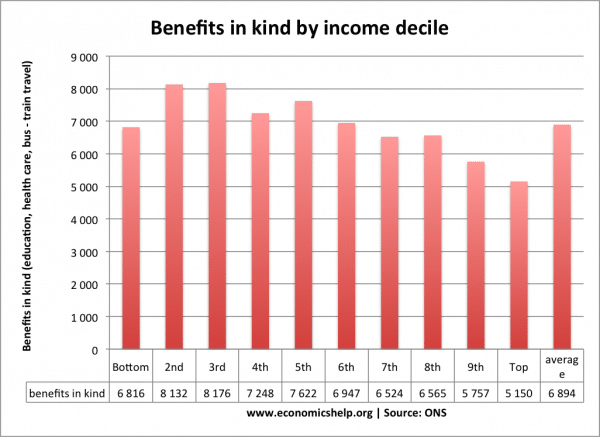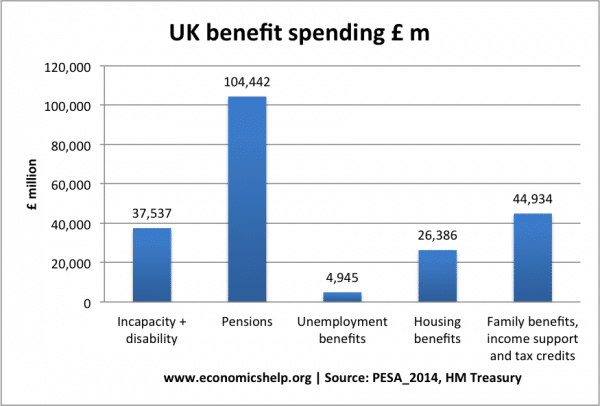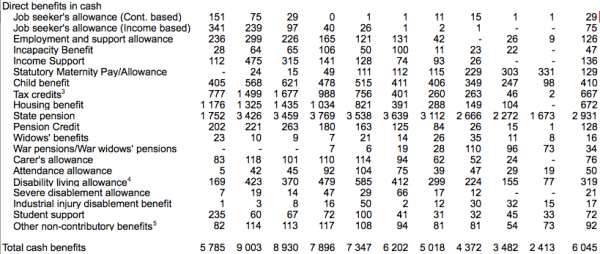The average UK household receives on average £6,045 a year in government benefits (2013/14) (ONS, average incomes table 14, June 2015)
The main benefits are:
- State pension
- Tax credits
- Housing benefit
- Unemployment benefit
- Disability allowance / incapacity benefits
- Student support
- Child benefit
The biggest benefit is the state pension, with the average household receiving £2,931.
Although many benefits are means tested, the poorest income decile (bottom 10%) don’t actually receive the highest level of benefits. The poorest 10% receive £5,785. It is the second poorest decile (10-20% which receive the highest amount of £9,003.
The 6th income decile receive more cash benefits than the bottom decile
Why do the poorest not receive the most means tested benefits?
- The poorest 10% receive less pensions (suggesting the poorest 10% less likely to be over 65), but of working age.
- They also receive less tax credits (the poorest 10% are less likely to be working so don’t benefit from top of benefits for low wages). The biggest recipients of tax credit are the third decile who receive on average £1,677. compared to just £778 for the bottom 10%
- The receive lower housing benefit (suggesting they may live in areas with cheaper rents).
- The poorest 10% receive the most unemployment benefits, but unemployment benefit is relatively small compared to other benefits, such as tax credits and housing benefit.

It shows that cash benefits are received by a cross section of the population. Although there is a degree of means testing, some benefits are not means tested – notably the state pension.
3 – tax credits = child tax credit + working tax credit.
Benefits in kind
Another category of benefits are called ‘benefits in kind’ These are public services which people receive free at the point of use (or subsidised). A cash value is placed on these public services to reflect the cost of having to pay for them.

Benefits in kind are primarily composed of
- Education
- Health care
The poorest 10% have one of the lowest benefits in kind from the national health service. Possibly because those on low incomes may be less willing / have poorer access to health care facilities.
Education in kind declines with higher incomes, possibly because higher income households may be those who are less likely to have children in education or may educate their children privately.
Related



